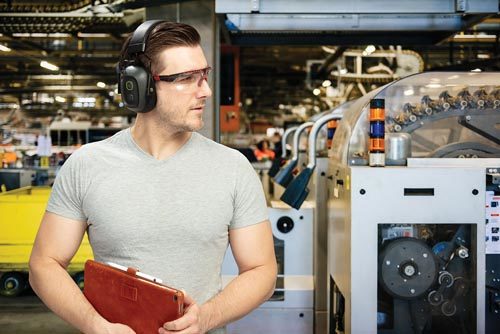Hearing protection for all jobs
As workplaces face labor shortages, employees are covering more jobs and responsibilities. How can safety managers ensure workers receive the proper hearing protection across different job environments in a single shift?

Responding is Marc Kirsch, senior product marketing manager, Honeywell Personal Protective Equipment, Charlotte, NC.
As we move into the third year of the COVID-19 pandemic, with lower levels of individuals entering the labor market than in previous decades, labor shortages continue to affect employers across industries. Because of this, workers are taking on more roles than we’ve seen before. As individual workers take on more responsibilities, the risks they face may be new to them. Add these new risks to heightened stress levels and fatigue, and they can lead to inconsistent adherence to safety protocols.
When it comes to proper hearing protection, workers and safety managers first need to be aware of the known noise levels within work environments. Those noise levels, however, can vary across different areas of jobsites or work facilities and for different tasks. For example, operating a forklift can generate 87 decibels of sound, but working around a generator can be above 116 db. There’s no “one size fits all” when it comes to hearing protection. Instead, protection should be tailored to the level of noise exposure and individual worker needs. Knowing the level of protection workers receive from personal protective equipment provides incredible value to both employees and employers.
In the event workers are exposed to varying levels of noise during their shifts, some might think going with the hearing protection device with the highest noise reduction rating is the best option. However, proper fit is actually more important than people typically realize. An eighth of an inch can be the difference between receiving the stated level of protection based on the NRR of an earplug and getting no protection at all. Fit testing is the best way to know if employees are wearing their hearing protection devices correctly. If workers don’t have access to fit testing, one simple trick is to look at an employee head-on. If the earplugs are sticking out, they likely don’t fit correctly. Workers should always follow the manufacturer’s instructions for proper fit, which are listed on the packaging.
Balancing the right level of hearing protection for workers can be challenging, but innovations in technology are helping safety managers remove the guesswork. Smart hearing solutions are available today that integrate cloud-based software and connected protective headsets to monitor sound in real time. Using this type of innovation, not only are workers protected from loud background noises, but data is also shared with safety managers to remotely monitor noise levels and worker exposure on visual dashboards. This is particularly beneficial for those who work in changing or unpredictable noise environments, empowering them with tailored information on which tasks hold higher risks.
Let’s face it: Ensuring proper hearing protection across an entire workforce is a challenge because every worker’s needs are different. No two workers’ ears are the same, so their PPE needs won’t be the same either. Combine that challenge with a reduced workforce that requires agility to take on different jobs, and it can feel daunting to know whether each employee is receiving adequate protection from when they clock in to when they go home. By integrating best practices such as fit testing, along with smart wearables with cutting-edge software and cloud-based services, workers and safety managers can proactively implement safety measures before hearing damage occurs.
Editor's note: This article represents the independent views of the author and should not be construed as a National Safety Council endorsement.
Post a comment to this article
Safety+Health welcomes comments that promote respectful dialogue. Please stay on topic. Comments that contain personal attacks, profanity or abusive language – or those aggressively promoting products or services – will be removed. We reserve the right to determine which comments violate our comment policy. (Anonymous comments are welcome; merely skip the “name” field in the comment box. An email address is required but will not be included with your comment.)

